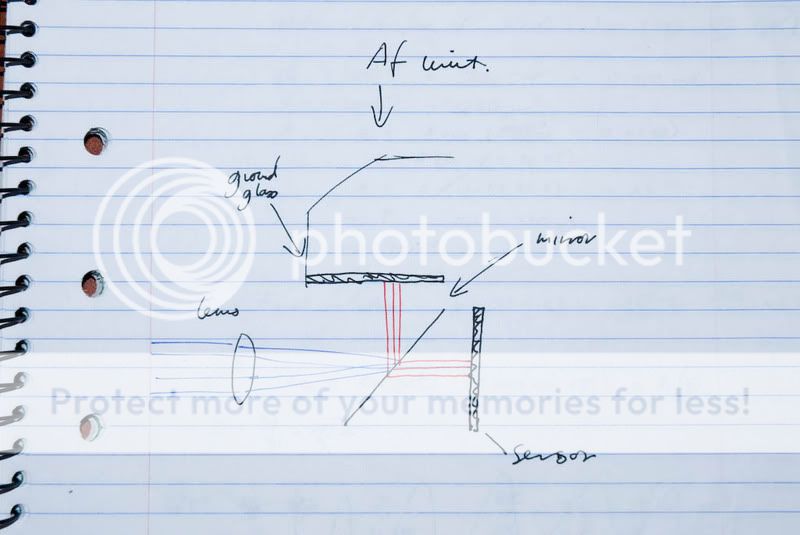Garbz
No longer a newbie, moving up!
- Joined
- Oct 26, 2003
- Messages
- 9,713
- Reaction score
- 203
- Location
- Brisbane, Australia
- Can others edit my Photos
- Photos NOT OK to edit
Ok can someone explain this to me in simple terms so my engineering mind can comprehend it?
I see this all the time, most recently about 30 seconds ago in a thread about equipment containing a 18-50mm Sigma lens where someone mentioned the downsides were that there are dodgy units out there with backfocusing issues.
Now how can back focusing be a lens issue? Either the picture is in focus or it isn't. If the distance between the lens element and the 90 degree reflection of the rapid return mirror and finally the focusing screen is the same as the distance between the lens element and the focusing plane, then any shots which are remotely out of focus must fall on to the onus of either the user, or the camera. The former being not paying attention when focusing and the camera has in its opinion correctly focused on something behind the subject, and the latter being that the mirror (not the lens mounted if the laws of physics are to be obeyed) is positioned incorrectly so that the focus does not appear to be the same on the ground glass as the focal plane.
In the end it's the cameras job to look at the incoming light, detect the phase from the split beams in the autofocus module and move the lens focusing motor until it is good. If the picture is then out of focus then the camera made the mistake (or the user did).
The only thing the lens can be really at fault for is being too slow and not letting enough light through for AF to work (like f/6.3 and above lenses may) or not being able to get any focus at all as a result of a misaligned element.
I don't get it. Were the people who reported their back-focusing problems were fixed when they replaced a lens inhaling something at the time?
I see this all the time, most recently about 30 seconds ago in a thread about equipment containing a 18-50mm Sigma lens where someone mentioned the downsides were that there are dodgy units out there with backfocusing issues.
Now how can back focusing be a lens issue? Either the picture is in focus or it isn't. If the distance between the lens element and the 90 degree reflection of the rapid return mirror and finally the focusing screen is the same as the distance between the lens element and the focusing plane, then any shots which are remotely out of focus must fall on to the onus of either the user, or the camera. The former being not paying attention when focusing and the camera has in its opinion correctly focused on something behind the subject, and the latter being that the mirror (not the lens mounted if the laws of physics are to be obeyed) is positioned incorrectly so that the focus does not appear to be the same on the ground glass as the focal plane.
In the end it's the cameras job to look at the incoming light, detect the phase from the split beams in the autofocus module and move the lens focusing motor until it is good. If the picture is then out of focus then the camera made the mistake (or the user did).
The only thing the lens can be really at fault for is being too slow and not letting enough light through for AF to work (like f/6.3 and above lenses may) or not being able to get any focus at all as a result of a misaligned element.
I don't get it. Were the people who reported their back-focusing problems were fixed when they replaced a lens inhaling something at the time?







![[No title]](/data/xfmg/thumbnail/34/34040-14af4007923299ad46d35fc110d0faad.jpg?1734164446)





